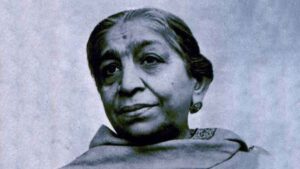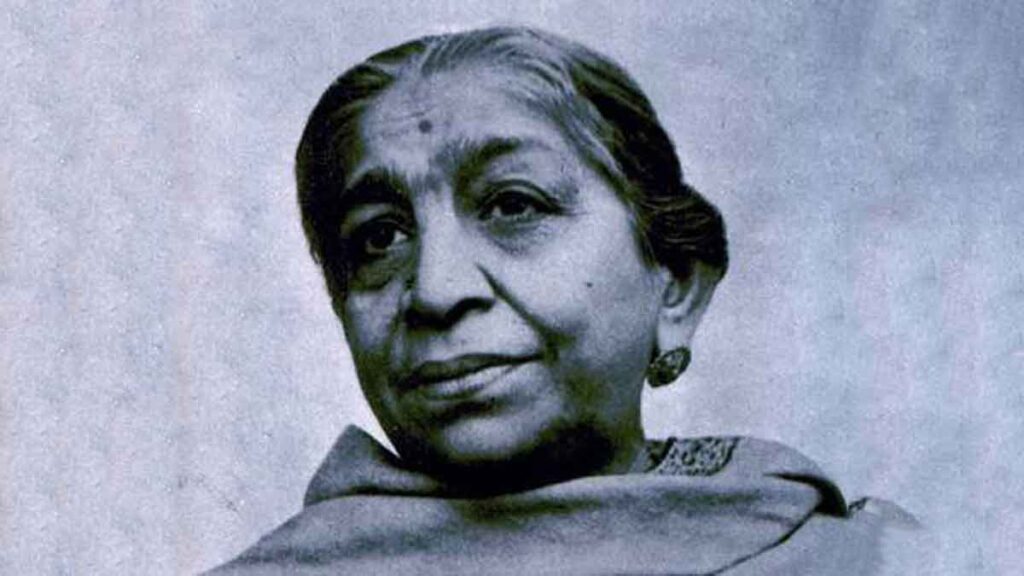The Nightingale of India~ Sarojini Naidu

A women who stood for Female Rights- A true inspiration for promoting Feminism in India
“As long as I have life, as long as blood flows through this arm of mine, I shall not leave the cause of freedom…I am only a woman, only a poet. But as a woman, I give to you the weapons of faith and courage and the shield of fortitude. And as a poet, I fling out the banner of song and sound, the bugle call to battle. How shall I kindle the flame which shall waken you men from slavery”
- She started her career in literature at the age of 12 by writing a play named Maher Muneer. The play received wide recognition and praises.
- She received a scholarship at the age of 16 from the Nizam of Hyderabad and went to London King’s College. There, Nobel Laureates Arthur Simon and Edmond Gausse advised her to focus on Indian themes for writing.
- She became an incredible poet of the 20th century by expressing her feelings, emotions and her experiences through poems.
- During her college days, she falls in love with a non-Brahmin physicist named Padipati Govindarajulu Naidu. She married him at the age of 19.
Her fight for freedom began when the viceroy of India, Partitioned Bengal.
- She met Gopal Krishna Gokhale through whom she came into contact with several prominent faces of India’s freedom struggle including Mahatma Gandhi, Jawaharlal Nehru, Rabindranath Tagore and Annie Besant.
- She was urged by Gokhale to use her intellect for the cause and she dedicated herself to politics and Indian freedom movement, taking a respite from writing.
- Between 1915 and 1918, Naidu travelled to different regions in India delivering lectures on social welfare, the emancipation of women and Nationalism and established Women’s Indian Association in 1917.
- In 1916 she fought against the Brtish for the rights of farmers in Champaran, Bihar who were forced by the Britishers to grow Indigo instead for the food crops they used to grow for their survival.
- Naidu was awarded the Kaisar-i-Hind Medal by the British government for her work during the plague epidemic in India, which she later returned in protest over the April 1919 Jallianwala Bagh massacre.
- Naidu again went to London in 1919 as a part of the All India Home Rule League as a part of her continued efforts to advocate for freedom from the British rule. Upon return to India in 1920, she joined Gandhi’s Satyagraha Movement.
Sarojini Naidu presided in the annual session of Indian National Congress (INC) in 1925, and also became the president of the INC.
Naidu said in her address, “In the battle for liberty, fear is one unforgivable treachery and despair, the one unforgivable sin”.
- Sarojini Naidu participated in the Salt Satyagraha with many other women protesters at Dharsana Salt Works in Gujarat.
- Naidu was arrested, along with other Congress leaders including Gandhi, Jawaharlal Nehru, and Madan Mohan Malaviya for participating in 1930 Salt March.
- Naidu was one of the major figures to have led the Civil Disobedience Movement and the Quit India Movement led by Gandhi. She faced repeated arrests by the British authorities during the time and even spent over 21 months in jail.
Sarojini Naidu was the first female governor of India – she served as the Governor of United Provinces in Agra and Oudh from 1947 to 1949.
- She died on 2 March 1949 due to cardiac arrest at the Government House in Lucknow. She had been the strongest advocate of the Father of the Nation “Gandhiji” and had supported him in every ideology to make India free form the British rule. She was nicknamed as Mahatma Gandhi’s “Mickey Mouse”.
[social-share buttons=”facebook,twitter,pinterest,linkedin,whatsapp,copy”]
Jhansi Rani fall from the horse, but no British soldiers identified her as she was wearing…..Read more

